Split is a versatile destination. You only need a day to visit the top attractions, but there’s enough to see for even a month.
In addition to its cozy Old Town, Split contains a variety of beaches to enjoy a beach holiday as well. The possibilities for an active holiday are endless, and the world-famous Croatian archipelago unfolds right before the city.
Split is a good base for various day trips. When returning to the city, the Old Town provides picturesque alleys and squares for relaxing and enjoying Dalmatian specialties. What a great way to get ready for another day.
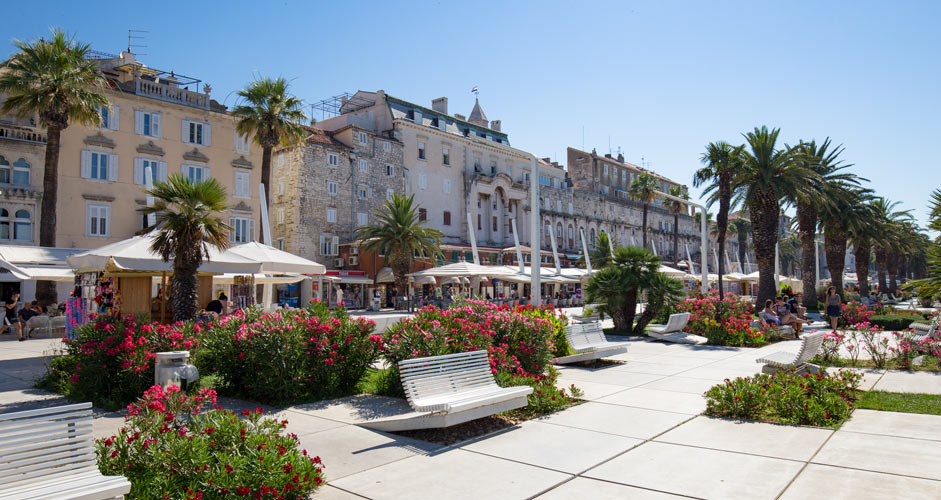
Where to stay in Split
Since Split is all about the Old Town, beaches and the harbor, there is no reason to consider the suburbs for staying – unless you’re thinking about prices. There is no metro in the city either and, therefore, getting around is not very easy.
Another thing altogether is whether you want to live in the narrow alleys of the Old Town, or whether you prefer slightly wider streets outside of it.
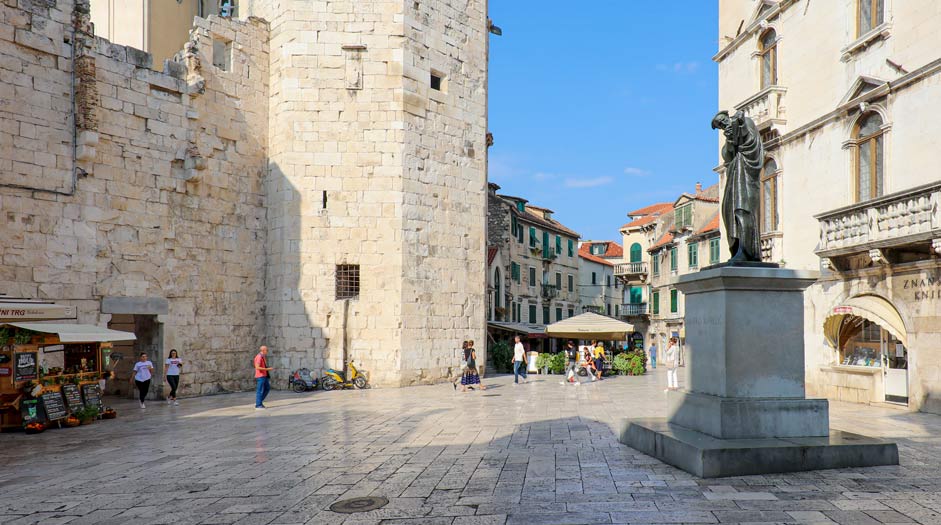
- Between the Old Town and Marjan Hill, there’s a cozy area with atmospheric alleys, especially in the evenings. It resembles the Old Town, but is not officially a part of it. The ground slopes up rather steeply towards the top of Marjan Hill and, therefore, it’s worth checking as to how high up your potential accommodation would be located.
- The area north of the Old Town consists of typical, dullish urban scenery. Here the ground slopes up as well, but more gradually. The wide Domovinskog rata street with many services and the proximity of the Joker shopping center are an advantage of the area.
- The area east of the Old Town also falls into the category of boring cityscapes. An exception is a small area with many walkaways around Radunica ulica, where the surroundings are just like a hundred years ago. So, if you want to live in an old building next to the city center, but still in a very quiet area, look for narrow alleys on the map around Radunica and its side streets.
- The Bačvice district south-east of the Old Town is an ideal location for accommodation, as the Old Town, the sandy beaches and the harbor are practically next to it. Especially for families with children, Bačvice (or the western side of Firule) may be the best solution.
Video of Split (September-October 2021)
Things to do in Split
1. Diocletian’s Palace and the Old Town
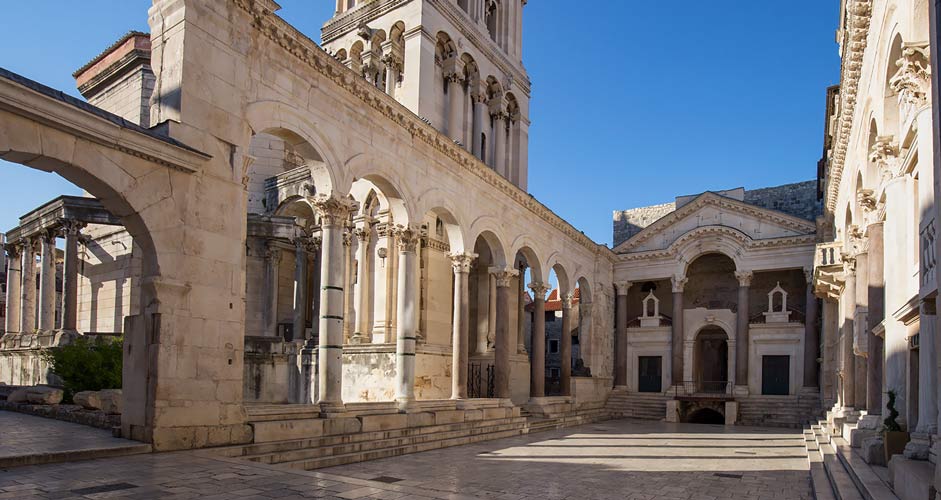
Today's Split has originated from Diocletian’s palace area, built by the Roman emperor Diocletian for his retirement, and evolved into a city over time. The walls of the palace, all four entrances, and some of the buildings are still remaining, constituting the best-known area of Split at the heart of the Old Town.
The palace was built at the turn of the 3rd century. It was originally square in shape, but the walls have been extended over time especially to the west, even until the 17th century. The walls largely delimit the present Old Town. The palace area itself is contained in the eastern and southeastern parts of the Old Town.

The Golden Gate in the north of the area and the Silver Gate in the east clearly stand out. The Bronze Gate (or Brass Gate) in the south is a little less noticeable as it is situated in between the surrounding buildings. The Iron Gate in the west is hidden in the midst of buildings and therefore hardly noticeable if you don't know where to look. The clock tower next to it stands out better than the gate itself.
The largest square of the Old Town, Narodni trg, is situated next to the Iron Gate outside the palace. To the southwest of the palace, there is another cozy square, Voćni trg. The Peristyle located in front of the cathedral is the main square in the palace area.
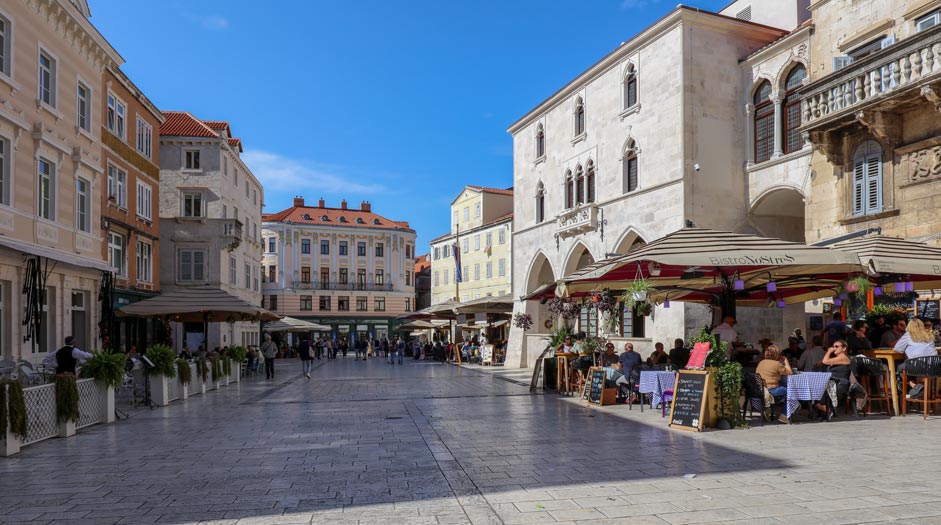
The rest of the Old Town consists of narrow and cozy streets with restaurants, cafes, shops, hotels, and apartments along its small squares.
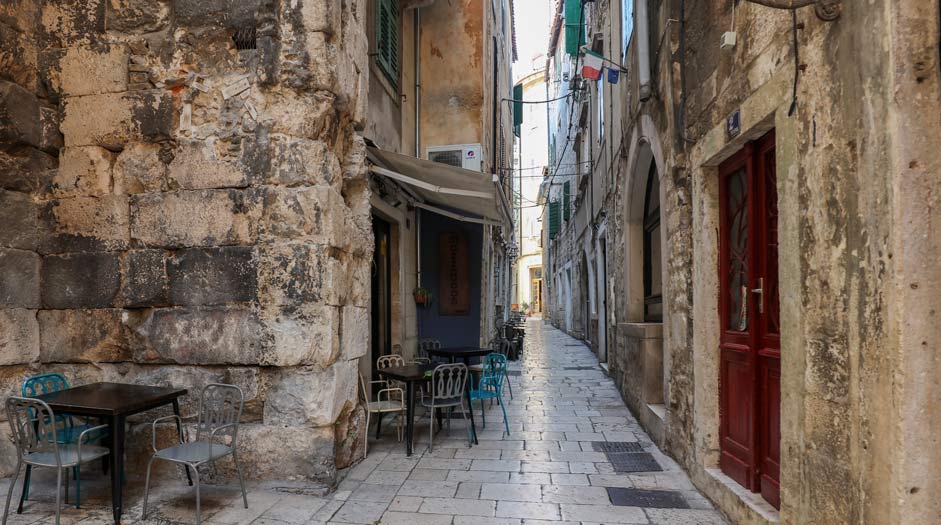
With a permanent population of about 3,000 people and integration to the surrounding city, the palace area is open 24 hours a day. Only some of its attractions require an entrance fee:
- Temple of Jupiter – A small, well-preserved former temple dedicated to Jupiter
- Cathedral of Saint Domnius – An impressive cathedral with the Mausoleum of Diocletian in the middle
- Bell tower – Via the front of the cathedral, you can climb the stairs up to the Bell tower with a complete view of Split. The stairs are steep at first, but later, as the stone stairs turn into iron stairs, they become easier to climb.
- The Crypt – A small round chamber under the cathedral.
- Riznica Treasury – Valuables, paintings, books, etc. displayed on three floors. It is located in connection with the ticket office.
Tickets are purchased from a ticket shop located in the Peristyle. There are several different tickets available with a list of purchased admissions, which will be crossed out one by one during the visit.
The sixth paid area is a high, well-preserved underground floor. Its entrance is in the shopping tunnel, also a part of the underground floor, between the Peristyle square and the Riva promenade. The basement floor is built according to the floor plan of the emperor's residence that used to be located one floor higher. You can, therefore, deduce the dimensions and rooms of Diocletian's apartment.
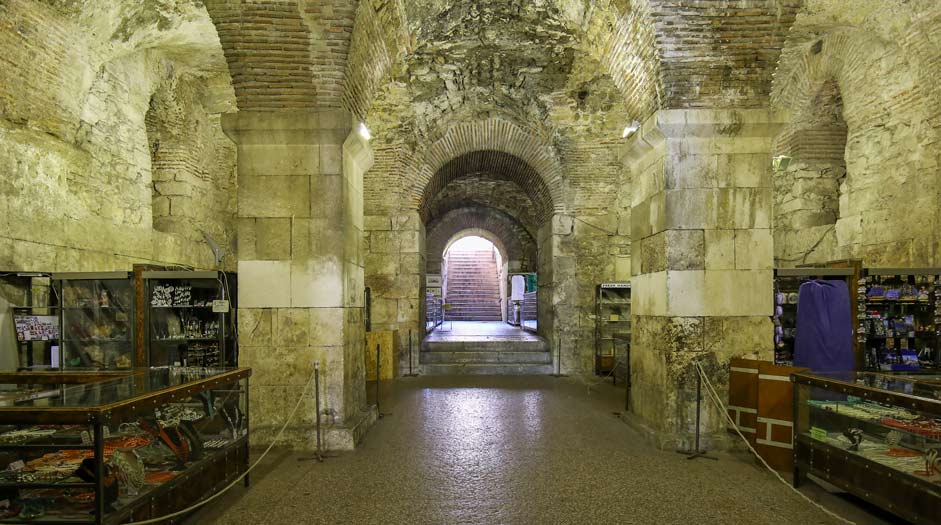
The Riva promenade south of the Old Town is one of the nicest things in Split. This lively restaurant street is great for strolling around among restaurants and by the sea. The land area with Riva did not exist at the time the palace was built, and the ships sailed directly southward to the Bronze Gate. Riva and some other extensions were built only later.
2. Marjan Hill
Marjan Hill is located right next to the city center offering nice variation to the hustle and bustle of the Old Town. The hill has no major attractions, and it is more of a place for outdoor activities and jogging with great views to the sea. There are several beaches at the foot of Marjan Hill – and note that you don't have to walk over the hill to reach them.
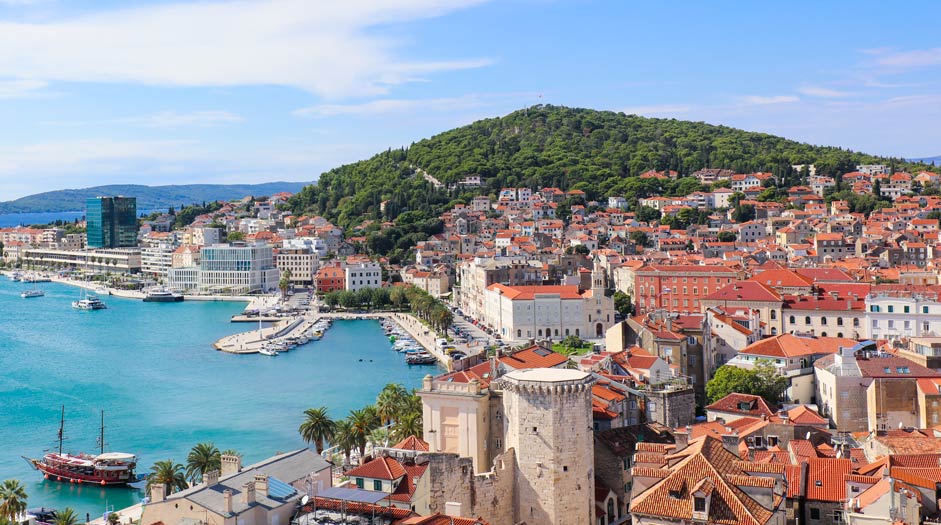
To climb up, there are a couple of different starting points by the center. The more gradual, longer stairs begin from the fountain at the western end of Riva. The name of the street going all the way up is Senjska ulica. The shorter, steeper stairs begin from Trumbićeva obala, right after the small boat marina shown in the picture above. There’s a signpost by the stairs.
It’s not going to be an easy climb via either of the routes, at least in hot weather. However, there’s a cafeteria-restaurant waiting at the top with a viewing platform next to it, offering a great view over split.
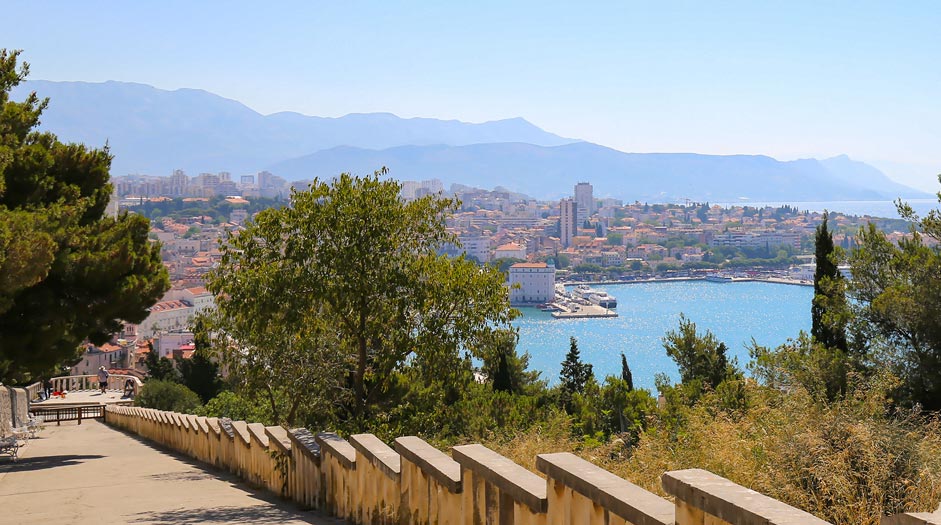
To reach the highest peak with the large 360° viewing platform, there are plenty more stairs to climb. There's the Croatian flag waving there, which can be seen faintly in the upper picture. The name of this observation deck is Vrh Telegrin on the maps, and it can also be reached by car/taxi if necessary. The way back to the city is only downhill.
If you don't care much about hills, there's a flat, 1.6-kilometer-long walkway on the northern side of the hill, stretching from the Špinut marina to the Bene Beach. The walkway follows the seashore, and as such you can easily go swimming or eat snacks by the sea along the way. The walkway continues as a narrow path by the road after the Bene Beach until the tip of the cape.
The southern side of the hill consists mostly of residential area, and there are no walking trails. If you want to walk around the hill without going to the top, you can easily do so following the edge of the car road.
3. Beaches in Split
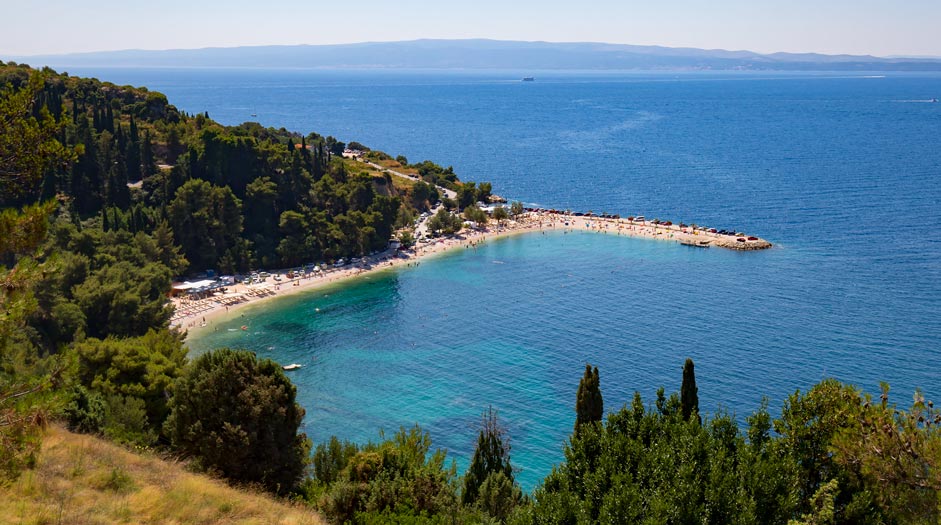
Split has a surprisingly diverse beach selection. The center contains shallow sandy beaches, suitable for families with children, and a little farther away, there are scenic gravel beaches with beach bars. Read more about the topic in the dedicated section, beaches in Split.
4. Klis Fortress
The extensive Klis fortress, dating back to over 2 000 years, is standing on a steep hill in the Village of Klis, 15 kilometers from the center of Split. The fortress offers great views over Split and the entire valley. Due to its ideal location and large size, it is one of the most significant fortresses in the history of the Dalmatian region.
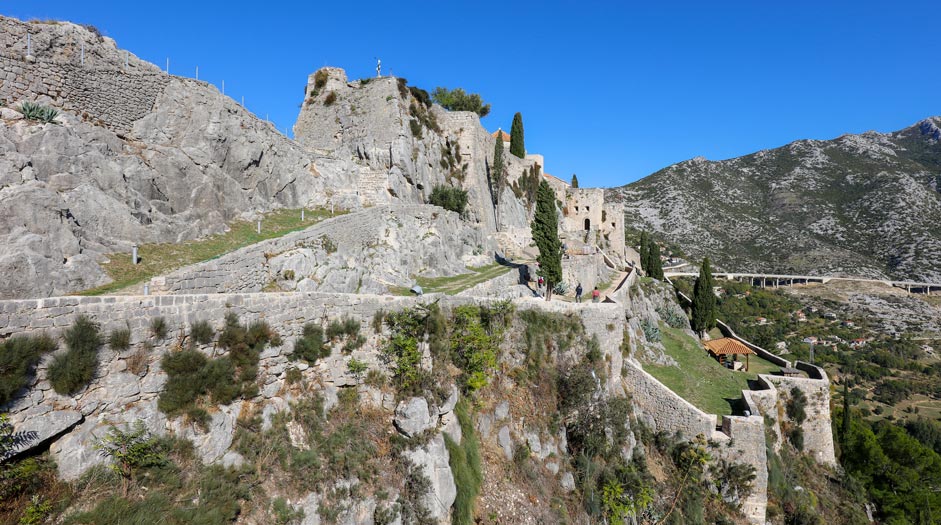
The fortress can be visited all year round during opening hours. The same ticket provides you access also to, e.g., Stella Croatica, a couple of kilometers away, to explore the local cuisine.
For more information, read here.
5. Salona
The ancient city of Salona, located eight kilometers away from Split, was once with tens of thousands of inhabitants the sixth largest city in the Roman Empire. Today, only the ruins of this former capital of the Dalmatian province remain, as Salona was destroyed in the 7th century.
You can explore the ruins and the surrounding one-kilometer-long area for an entrance fee on your own during the opening hours. The area now belongs to a village called Solin.
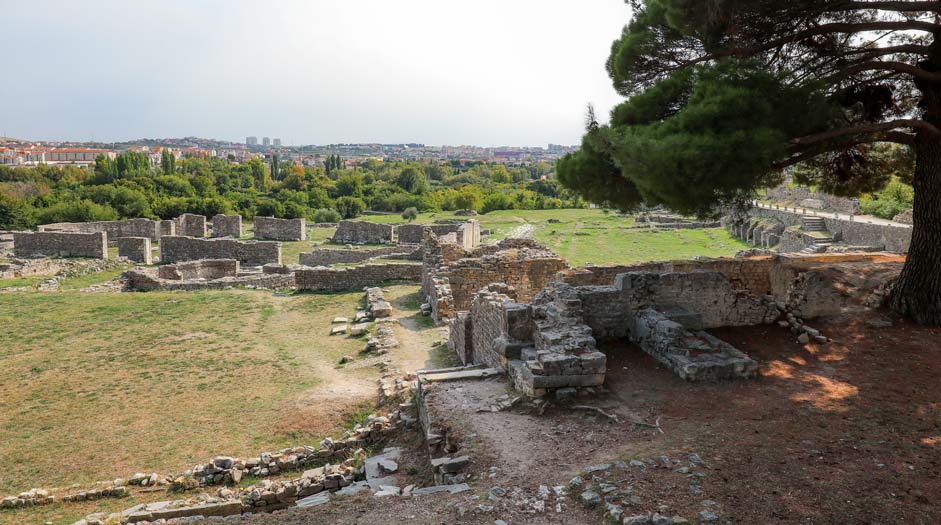
There is a small museum at the northern main gate, but most of the artefacts are on display in the Archaeological Museum of Split.
Split wouldn't exist in its present form without Salona. This is because Split originated from a palace built by the Roman emperor Diocletian for his retirement – and Diocletian came from Salona.
The main gate can be reached by bus, via line 1 (HNK-Starine), from the HNK stop north of the Old Town (in front of the Prima department store).
6. Water sports and boat rental
There are pretty much endless possibilities for water activities in Split. A Google search shows numerous companies for excursions and equipment rentals. Sea kayaks and paddle boards are also available at some beaches.
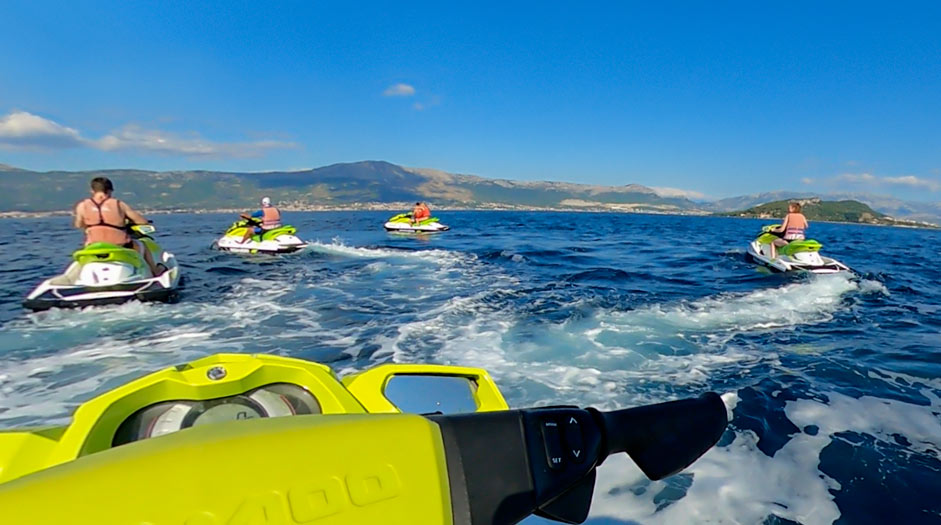
There are also all kinds of boats available – both with or without a skipper. The great archipelago unfolds right before the city.
The nearest river, Cetina, is situated 25 kilometers in Omiš. For rafting, the starting point is usually Zadvarje along the same river, some 50 kilometers away. Activities related to rivers and canyons tend to be in this direction from Split.
7. Museums
- City Museum – History of Split in and around the old palace. It is located in the northern part of the Diocletian's Palace, Papalićeva ulica 1.
- Archaeological Museum – Exhibitions both indoors and outdoors. In the outdoor exhibition, there are, e.g., many well-preserved parts of the buildings from Salona that's presented above. It is located northwest of downtown, Ulica Zrinsko Frankopanska 25.
- Museum of Fine Art – Art from the 14th century to the present day. It is located north of the Old Town, Ulica Kralja Tomislava 15.
- Meštrović Gallery – Mostly human sculptures from various materials by Ivan Meštrović. The same ticket also gives you access to Kaštilac, a few hundred meters away by the sea, with wood carvings in a small chapel. It is located on the southern side of Marjan Hill, Šetalište Ivana Meštrovića 46.
- Ethnographic Museum – Weapons, utensils, clothing. Through the museum, there is also access to the upper plateau of Vestibul, with views down an opening and over the rooftops of the city. However, if you are looking for a real vantage point, you should climb to the cathedral tower instead. The museum is located in the buildings and stairs of Diocletian's Palace, and the entrance is behind the Vestibul.
- Maritime Museum – The museum is divided into sections of military history and shipping. It is located in an old fortress on a small hill east of the city center, Glagoljaška ulica 18.
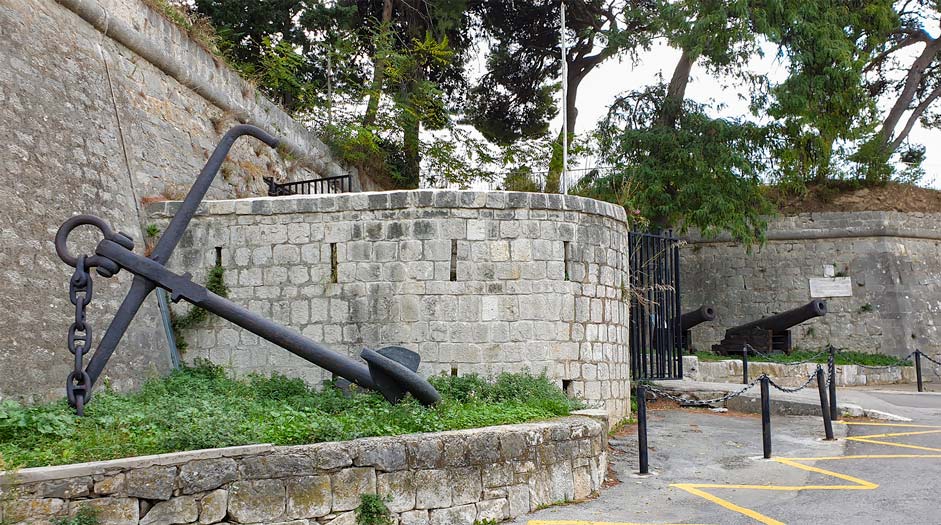
8. Hajduk Split, Poljud Stadium and Torcida
The traditional club, Hajduk Split, is the number one football club in the city and in the whole Dalmatia. The passion towards the club shows via, e.g., murals in Split and nearby villages. The home stadium of Hajduk can be visited on weekdays - more information here.
Founded in 1950, Torcida Split, or just Torcida, is the oldest supporters' group in Europe. Torcida mural can also be seen here and there, especially around Poljud Stadium.
9. Things to do for families
- Bačvice and Firule are very shallow sandy beaches, suitable for small children. The Znjan beach has the largest selection of things to do (bouncy castles, mini go-karts, etc.).
- Froggyland – Stuffed frogs arranged in a variety of human-like situations.
- Semi-submarine tour – The windows of a boat halfway under the surface allow you to observe underwater life.
- Illusion Museum – A variety of rooms and tricks to confuse your sense of reality.
- Indoor go-kart track at City Center One shopping mall. Note: The minimum age of 12 years and the height of 160 cm are required.
Day trips from Split
Cruises and islands
The world-famous archipelago of Croatia and its clear waters are as diverse as it gets right in front of Split. With the busiest port of Croatia, there are plenty of options for everyone in Split.
Hvar, about an hour away by catamaran, is one of the many popular islands nearby. Other popular day trip destinations include the Blue Lagoon next to Drveni Veli Island, and the Blue Cave on Biševo Island.
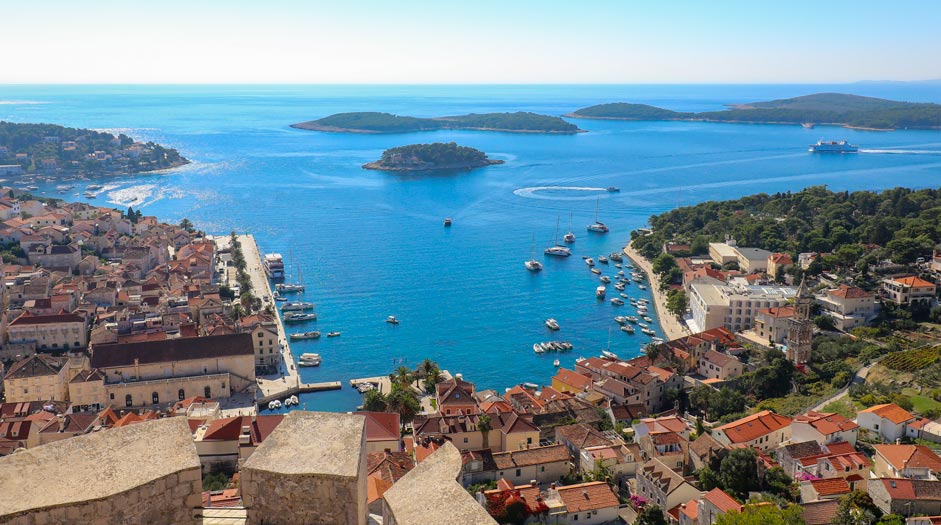
Alternatives to travel to the islands include a private speedboat, a ferry, or a catamaran. Catamarans feel like traveling by bus or train with rows of benches to sit on, while larger ferries, which can also carry cars, have more room to move while traveling, even to the deck. A catamaran is the faster one of these options.
The largest companies operating scheduled ferry or catamaran services include Jadrolinija and Kapetan Luka.
There are myriads of day trip organizers to many different destinations. However, regardless of the destination, e.g., the Blue Cave, all day trips include additional stops along the way, often to cities or beautiful beaches. Therefore, you should try to find an organizer offering interesting additional stops with the transport method of your preferred choice. Day trips often take up to 8-10 hours.
Trogir
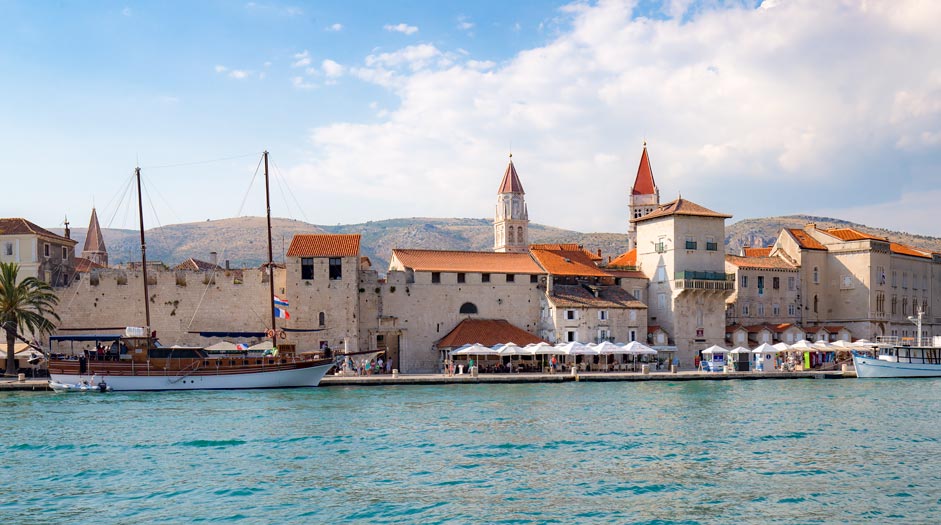
The medieval town of Trogir is built on a small island. It is partly surrounded by walls, thus resembling the Diocletian's Palace in Split.
Trogir is situated only six kilometers away from Split Airport. Trogir has, therefore, a great location if you’ve booked an evening flight and have the whole day to spend. Or, since Trogir has plenty more to offer, you could just as well have a combined holiday in Split and Trogir.
A bus, a taxi, or a ferry are all good choices to travel between the cities. Also, the first stop on the above-mentioned day cruises is very often Trogir.
For more information about the city, check the Trogir travel guide.
National parks
The two large national parks in Croatia, Krka and Plitvice, are well known especially for their waterfalls. Both are suitable day trip destinations from Split. Krka and Plitvice are situated some 100 km and 260 km away from Split, respectively. More information: Krka and Plitvice Lakes.
Food and restaurants
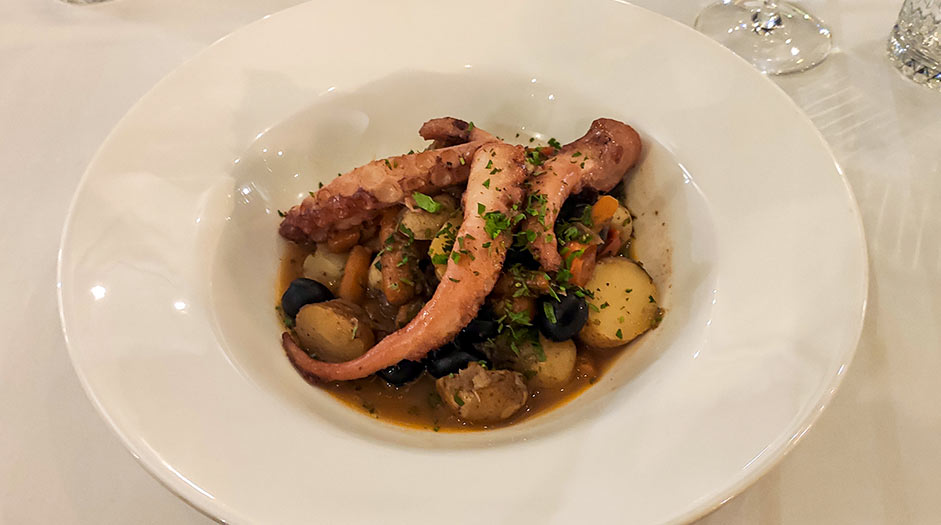
Split offers a wide range of restaurants with seafood playing the leading role. Good restaurants are situated around the Old Town and in its vicinity. Read more about the topic in the Split restaurants and food section.
Shopping
The Old Town contains all types of small boutiques all over the area. Clothing stores are a little easier to find in Marmontova ulica, on the western side of the Old Town. One block to the east at the northern end of Marmontova, there is a small department store / shopping center, Prima. It is located next to the HNK bus stop.
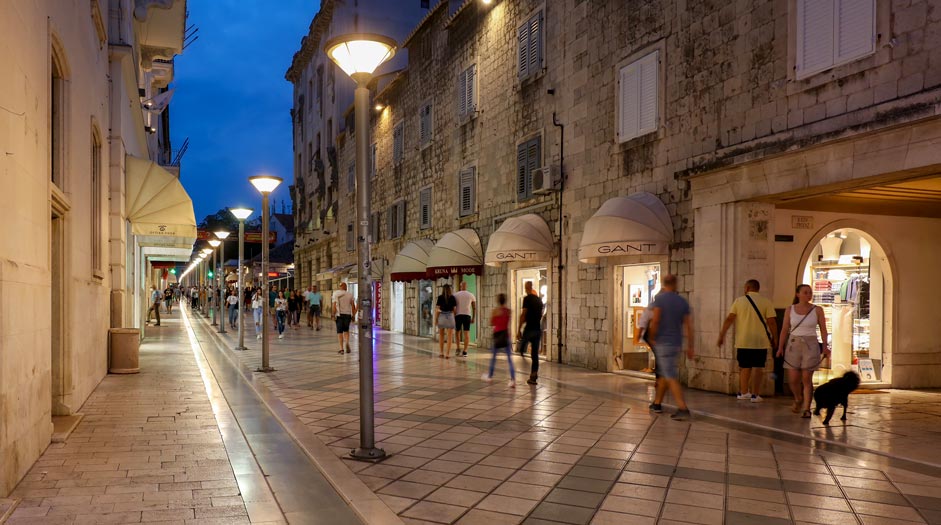
There are three larger shopping malls in Split, each equipped with a cinema for rainy days. The medium-sized Joker is situated just 1.5 kilometers from the Old Town, but note that the road to get there is gentle uphill. The two larger ones, Mall of Split (link) and City Center One (link), are situated 4-5 km east of the Old Town and only 1.5 km apart from each other. Of these, Mall of Split is newer and has better shop selection. There are also free bus connections to the Mall of Split from the city center.
To the east of Diocletian's Palace, there's is a large market area, Pazar, with everything from clothing to souvenirs, cheeses, oils, vegetables, etc. on offer. Butchers are lined up mainly on the east side of the area. The fish market is located in a hall on the other side of the Old Town, between Marmontova ulica and Obrov ulica.
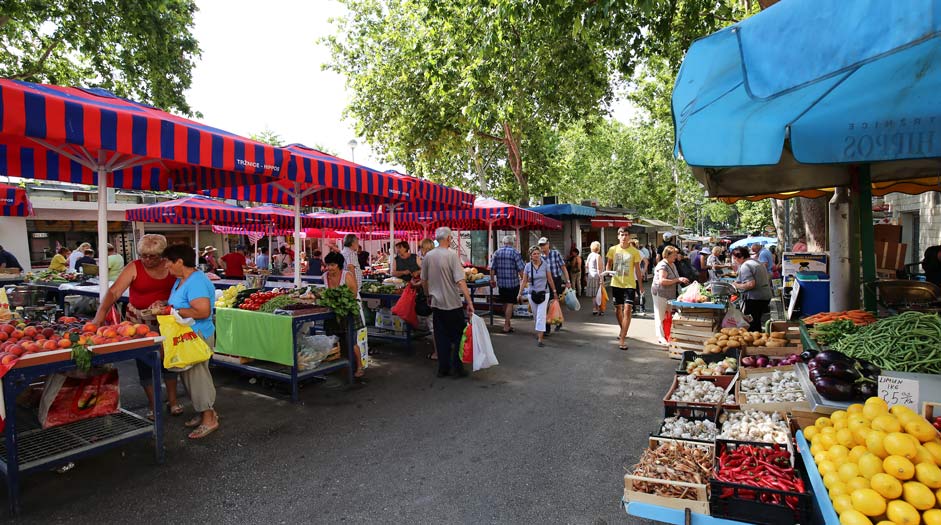
Prices
Split is a more expensive destination than Croatian cities on average. Imported goods may even be as expensive as in Central and Northern Europe, but on the other hand, local products and services, such as bakery products, barber or bus trips, are very inexpensive. Restaurant prices become cheaper the further you go from the city center.
Below, there are some examples of hotel and restaurant prices. As you can see from the table, Split is not the cheapest destination in terms of hotels in the summer, and you might want to consider traveling there in the spring or fall. Due to the large amount of holiday apartments on offer, they are clearly cheaper than hotels. Hence, you can save big money by choosing an apartment instead of a hotel.
These hotel room prices are the median prices in the center of Split on Booking.com.
Pizza in restaurant
33 cl beer in restaurant
Hotel room, 3-4* (April)
Hotel room, 3-4* (July)
€9-12
€4
€110
€229
From the airport to the center
Split is situated some 20 kilometers away from the airport. The airport is commonly referred to as Split airport, although it is located in Kaštela.
The airport bus is operated by Pleso prijevoz. The journey takes about 30 minutes depending on traffic, and costs 35 kunas (approx. 5 euros). The bus operates to the bus station next to the Old Town with no stops on the way, so it’s not any slower than a taxi.
Busline 37 operating between Trogir and Split also stops at the airport. Note that the bus doesn't stop in front of the terminal, but a 300-meter walk away along the road in front of the airport instead. The journey takes about 50 minutes depending on traffic, and there are several stops on the way. More information and schedules can be found here. Line 37 doesn't reach the bus station in the city center. Instead, it stops at Sukoišan station, about a kilometer from the Old Town.
There are no train connections. In addition to taxis, Uber operates in Split, and cars are available swiftly.
Weather in Split

Winter: In the winter, there’s a typical Mediterranean winter weather in Split. Along with the mild temperatures, there’s high humidity and frequent rain. The average daily high temperatures usually vary between 8-15 °C. At night, sub-zero temperatures are possible but unlikely. Extremely strong Bora winds can sometimes hit Split in the winter.
Spring: Spring is a great time to visit Split. Bear in mind, however, that the water is still cold and may spoil the fun, if you’re a keen swimmer. The daily high temperatures surpass 20°C early in the spring, but the evenings aren’t that warm and there’s often a cold wind blowing. Therefore, it’s best to have a coat with you. May is already a very warm month with temperatures going constantly over 20°C and closing in on 30°C. It rains less in spring compared with winter and autumn months.
Summer: From June to August the sunshine is pretty much guaranteed. It really gets hot in Split, as the temperatures climb to 30 °C and above.
Autumn: September is still a warm month with frequent beach weather. The temperature in September stays well above 20 °C and at night around 20 °C, but the total rainfall is higher in comparison to August. In mid-October, the weather cools down to under 20 °C, and it rains more often. October, November and December are the rainiest months of the year.
---
Text, images and video: Jussi Ryynänen
Music of the video: Before I Go / RKVC – Audio Library, Youtube




